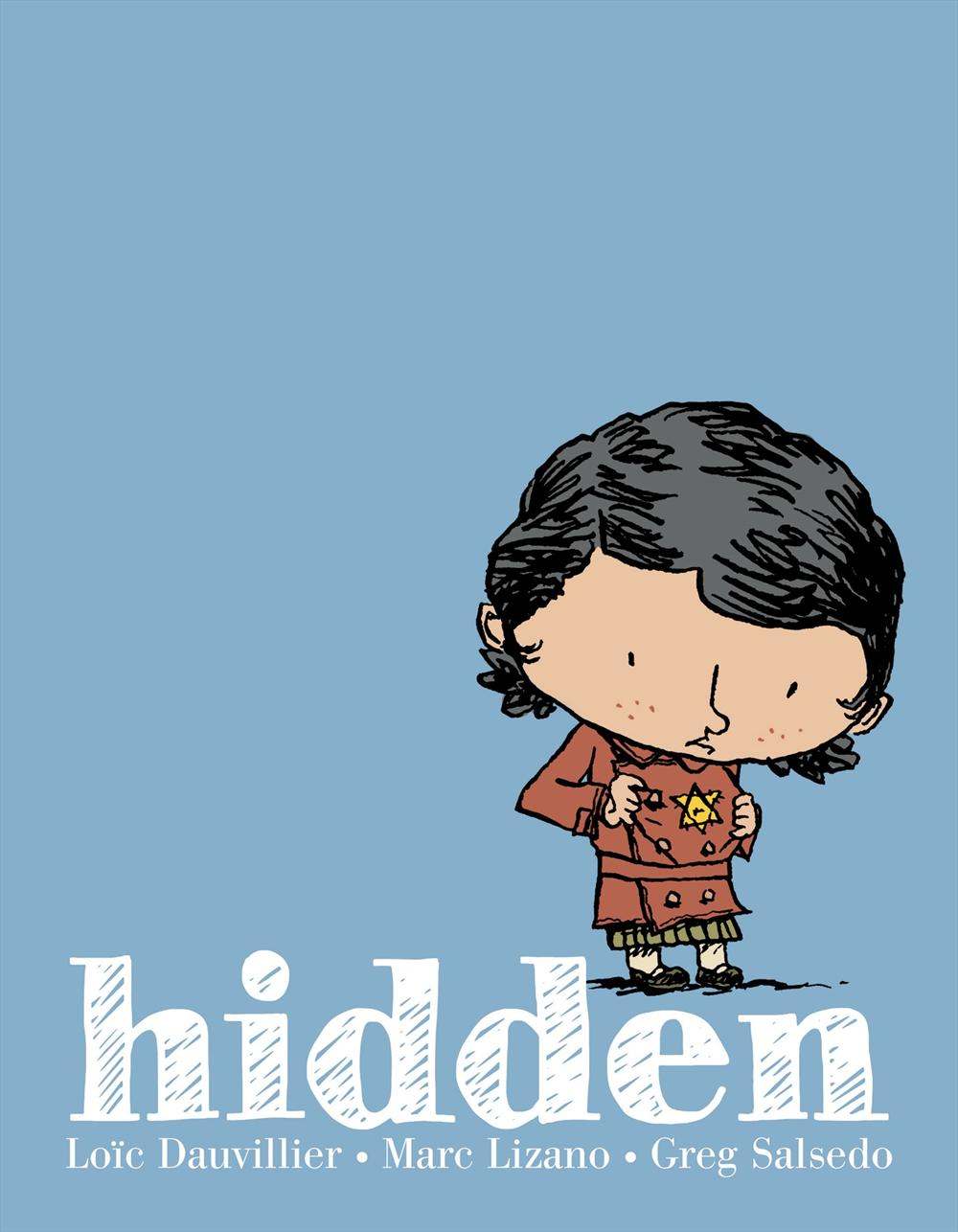31 Jan / Hidden: A Child’s Story of the Holocaust by Loïc Dauvillier, illustrated by Marc Lizano, color by Greg Salsedo, translated by Alexis Siegel

 Preorder this title now and you can stop reading here … you won’t, you can’t, you will not be disappointed.
Preorder this title now and you can stop reading here … you won’t, you can’t, you will not be disappointed.
Oh, fine. If you’re still with me, let me tell you about Elsa, a little girl who just can’t seem to fall asleep. She tiptoes out of her room and finds her grandmother wide awake. Noticing her sadness, Elsa reassures her grandmother, “You know, when I have a nightmare, I tell Mommy about it and that makes me feel better. You want to tell me?” Hesitant at first, her grandmother begins, “It was a long time ago. Grandma was still a little girl …”
Dounia Cohen, long before she was Elsa’s grandmother, “didn’t care who had won or lost” the war: Despite France’s defeat by Germany in 1940, “My daddy had come home alive, and that was all the victory I needed.” One day, Dounia’s father presents the family with an unusual idea: “Some people suggested that we become a family of sheriffs,” which required her mother to sew a yellow star onto Dounia’s coat. “Being a sheriff … is more of a boy’s job,” Dounia initially thinks, “But I don’t mind,” as she looks at her proud reflection in the mirror.
By the next morning, that Star of David has marked young Dounia not with privilege, but made her a target of abuse. “What had I done,” she asks in bewilderment. As a young Jewish child in occupied Paris, Dounia is shunned, isolated, hated without reason. When her parents are violently taken away from their own home, she is sheltered by Mrs. Péricard, the downstairs neighbor. Fearful of the returning police, Mr. Péricard devises a plan to help Dounia escape to safety; in the process, he gravely risks his own safety. Dounia becomes Simone Pierret, a Catholic child who arrives on Germain’s farm with her “Mama” – that is, Mrs. Péricard, who has also given up her Paris life to care for the young girl. The war continues, but Dounia’s new identity – and the unlimited kindness of strangers – keeps her safe until reunion, at least in part, becomes possible …
Like Lola Rein’s The Hidden Girl and Maryann Macdonald’s more recent Odette’s Secrets, Hidden represents not only the 84% of Jewish children in France who escaped the Holocaust – the highest rate of survival for children in Europe – but also the 11,400 French children who were murdered during WWII. While Hidden bears witness to tragic history, the ultimate message is one of hope and redemption, that humanity can and will be effectively used against racism and hatred. Narratively and graphically, the French creative team proves spectacularly adept in balancing the nightmare with moments of innocent humor (“pink shoes”), unexpected laughter (“‘Does Grandpa know you were in love with another boy?'”), and joyful discovery (“‘I did it! I did it!'”). While some nightmares never quite fade, here’s hope that triumphant resolve will have longer staying power.
Readers: Middle Grade, Young Adult
Published: 2012, 2014 (United States)
